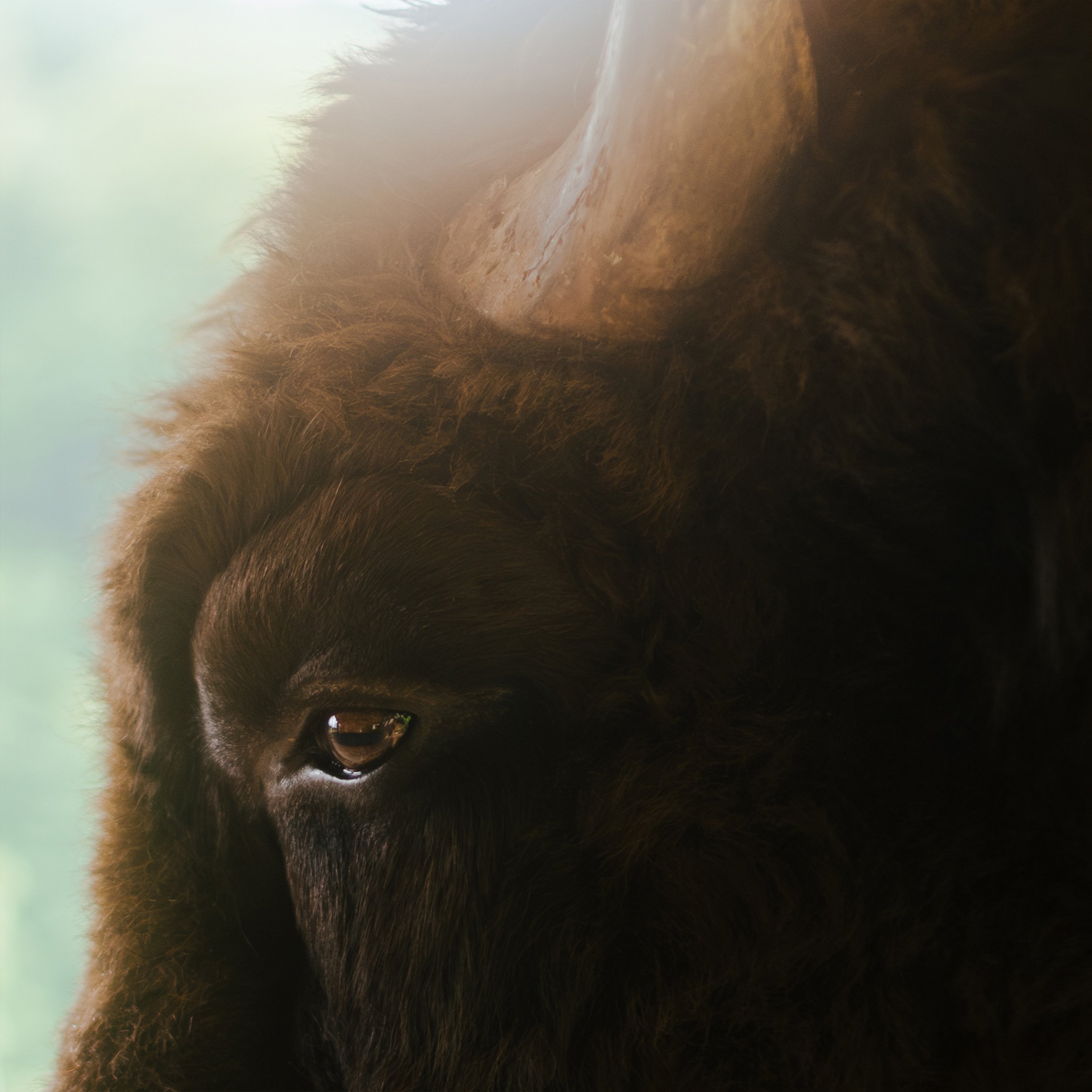By Cami Froneberger
Majestic and powerful animals, the bison remains one of the most admirable symbols of the American West. These icons have roamed our prairies and rangelands for thousands of years. Once in numbers reaching into the tens of millions, bison became the life-source for Native Americans who utilized every part of the animal. However, Westward Expansion brought European Americans to the areas occupied by Native American tribes in the 1800s and soon the U.S. Army sought to remove these tribes by removing their main food source: bison. By the late 1880s, the great herds of bison that once dominated the landscape were nearly gone. If not for the efforts of ranchers Charles Goodnight of the Goodnight-Loving cattle trail fame, showman and entrepreneur Charles “Buffalo Jones,” Native American Samael Walking Coyote, partners Michel Pablo and Charles Allard, and “Buffalo King” Scotty Phillip, the species would have ceased to exist. Now, herds are being restored through conservation efforts with more livestock producers joining the movement.
Producers Turning To Bison
With producer interest in the native ruminant growing, universities and associations began providing information on how to manage and maintain the species. In 2021, the South Dakota State University Center of Excellence for Bison Studies in collaboration with the Texas A&M AgriLife Extension Service published “Getting Started with Bison Ranching”. A surge in the desire to raise bison is the increase in popularity due to economic opportunities presented from production as well as contributions to land and resource conservation and sustainability.
Bison Ranching
Bison ranching comes with unique challenges. Though it has some similarities to cattle ranching, there are significant differences to be accounted for to ensure long-term sustainability and profitability. A hardy species, bison tolerate hot climates to that of southern Texas and colder climates to that of northern Canada. A major characteristic of bison is their utilization of native forages that may not be palatable to cattle. Bison also require less handling than their domesticated counterparts. Because these animals are not domistsicated, they are more wild, larger, and stronger. Getting started in raising a bison herd requires adequate preparation along with the right management approach.
Growing Efforts & Future for Bison
Recent years have seen an increase in private herd sizes as markets and consumer demand grow, making bison ranching financially attractive. Reintroducing bison to the Great Plains and prairie landscapes they once roamed freely is an important responsibility that producers do not take lightly. These magnificent creatures provide vital restoration to these lands as well as added nutritional benefits to any diet. Bison is a highly nutrient dense food because of the proportion of protein, fat, mineral, and fatty acids to its caloric value. Innovative producers are striving to increase their profit margins by utilizing more of the animal and creating value-added products such as bison jerky and other snacks.
As herds continue to grow and bring restoration to America’s rangelands, so do opportunities for investors to get involved. The global grass-fed meat market (including bison) is predicted to develop at a CAGR of 5.4% from 2023-2033 with the market currently standing at $13 billion dollars. Now is the time for investors to join in the efforts to bring these icons back to their native soil and help provide consumers with high-quality products.



